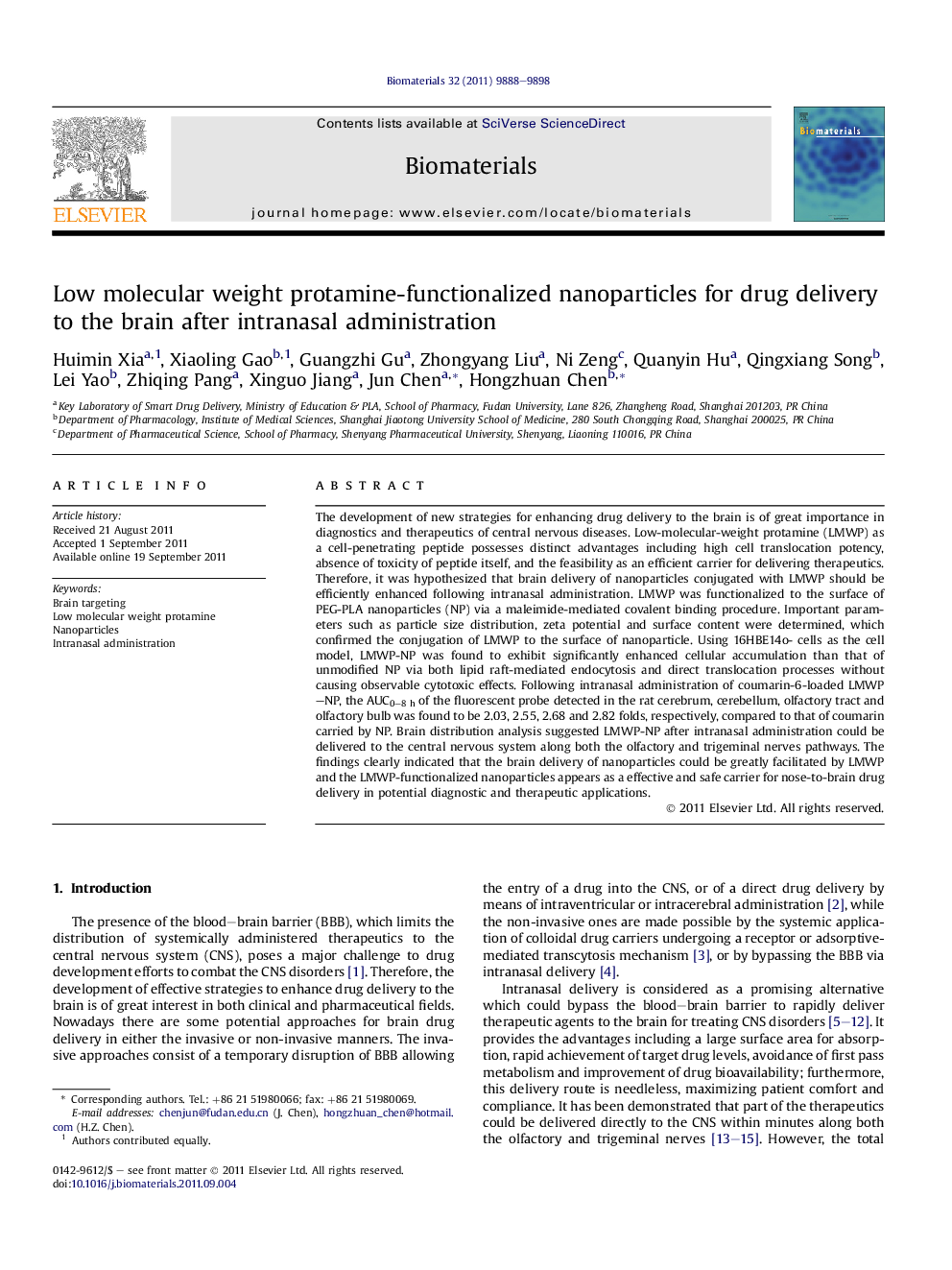| Article ID | Journal | Published Year | Pages | File Type |
|---|---|---|---|---|
| 7516 | Biomaterials | 2011 | 11 Pages |
The development of new strategies for enhancing drug delivery to the brain is of great importance in diagnostics and therapeutics of central nervous diseases. Low-molecular-weight protamine (LMWP) as a cell-penetrating peptide possesses distinct advantages including high cell translocation potency, absence of toxicity of peptide itself, and the feasibility as an efficient carrier for delivering therapeutics. Therefore, it was hypothesized that brain delivery of nanoparticles conjugated with LMWP should be efficiently enhanced following intranasal administration. LMWP was functionalized to the surface of PEG-PLA nanoparticles (NP) via a maleimide-mediated covalent binding procedure. Important parameters such as particle size distribution, zeta potential and surface content were determined, which confirmed the conjugation of LMWP to the surface of nanoparticle. Using 16HBE14o- cells as the cell model, LMWP-NP was found to exhibit significantly enhanced cellular accumulation than that of unmodified NP via both lipid raft-mediated endocytosis and direct translocation processes without causing observable cytotoxic effects. Following intranasal administration of coumarin-6-loaded LMWP–NP, the AUC0–8 h of the fluorescent probe detected in the rat cerebrum, cerebellum, olfactory tract and olfactory bulb was found to be 2.03, 2.55, 2.68 and 2.82 folds, respectively, compared to that of coumarin carried by NP. Brain distribution analysis suggested LMWP-NP after intranasal administration could be delivered to the central nervous system along both the olfactory and trigeminal nerves pathways. The findings clearly indicated that the brain delivery of nanoparticles could be greatly facilitated by LMWP and the LMWP-functionalized nanoparticles appears as a effective and safe carrier for nose-to-brain drug delivery in potential diagnostic and therapeutic applications.
